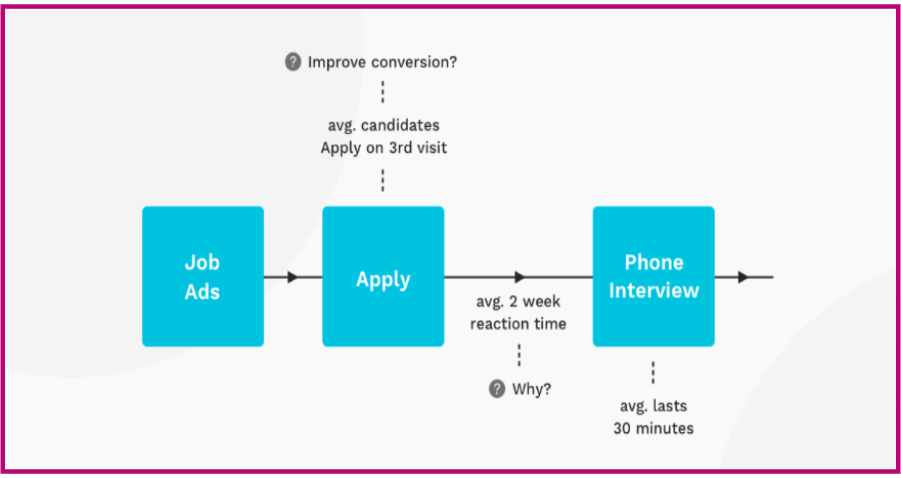© 2025 Next Level Business Services Inc. All Rights Reserved.
5 Steps To Reduce Time-To-Hire Without Sacrificing Quality
By NLB Services
The time consumed to make one hire is one of the key performance indicators for the hiring teams. It is estimated that only 30% of companies can fill a role within 30 days. The rest may take anywhere between 1–4 months to make a hire!
Measuring time invested to hire one position is no easy feat, but when you have the data, you can determine what needs to be improved in the hiring pattern.
Many HR professionals, hiring managers, and business owners are relying on data to assess the recruitment efficiency of their teams. “Time to hire” is a key metric to track the calendar days since the candidate has applied for the position and accepted a job offer from the organization.
The hiring time should always be less. It reflects the efficiency of the team. Now the question is, why should the company aim to reduce the time to hire?
Taking too long to fill up a position increases not only the cost per hire but also generates the risks of losing high-quality candidates.
The less time a company takes, the better, as it usually improves the candidate screening experience and helps you get the perfect fit.
How to Reduce Time to Hire in 5 Effective Ways
Outline a structured hiring plan
Not having a structured or planned hiring process means having a longer time to hire. And hiring managers start from scratch every time there’s a new role to fill.
It is important to flesh out the process from beginning to end, what the candidate’s journey will look like, what the steps are, and how long they take.

The process of job application can be understood by the above-mentioned diagram.
A documented hiring process will have your back from slowing down the recruitment process and dramatically improve your hiring time by keeping you aware of every step.
This is the best way to implement your recruitment strategy more effectively. Adam Robinson (CEO and Co-founder of Hireology) says: “A structured hiring process is cost-effective and will streamline how you find and qualify candidates. Plus, it can provide measurable, tangible results for your business by helping you avoid damage caused by bad hires.”
Identify KPIs
KPI is an acronym for Key Performance Indicator. While recruiting, identify the KPIs for the candidates and convey them clearly before onboarding. Setting up KPIs results in a better quality of hires and helps to boost their performance and check their progress toward a specific business goal over time. Setting up clear KPIs and communicating to candidates about the same help to keep the primary goals of a business at the forefront and track candidates’ progress, improve results and stay on track.
Build a database and keep it updated
Building a talent pipeline or database of candidates is often considered the most effective way of sourcing candidates for a job role. A talent pipeline- a group of candidates who are pre-screened for a role – is one of the most potent ways to reduce the time to hire. It comes in handy when you have some qualified candidates on your speed dial, whom you can get in touch with and fill the position.
For creating a database, identify the roles you often hire for and work around the requirements for those skill sets. Keep updating the data bank you create and reach out to applicants for the open position if it comes in the future.
Leverage a referral system to promote from within
An employee referral program is a way of finding qualified candidates for your open job roles other than leveraging traditional methods of hiring, like classified ads or job boards or digital campaigns. Companies should ask their employees for candidates’ referrals and recommendations to onboard new hires. When their suggestion is a strong fit, then they are rewarded with some bonus too. It brings a healthy environment and helps to build trust. It is one of the ways to onboard candidates who are already known to the existing members and can help in the quick time-to-hire formula by helping in closing the position.
Invest in a good application tracking system (ATS)
A good application tracking system (ATS) helps to streamline the recruitment process by keeping candidates posted about the next steps during the hiring process. An ATS can help you increase your hiring efficiency throughout and reduce the time to hire. It is one way from posting your job ad on multiple job boards and notifying candidates in real-time as they apply.
ATS takes care of large parts of your hiring process and reduces the time to hire.
Right from interview scheduling, application streamlining and sorting, creating a talent pipeline, and compliance-check, an ATS is a core tool to structure your hiring procedures and reduce your average time to hire.
Final words
By opting above methods, once you’ve found the qualified candidate, don’t delay the offer. The biggest reason candidates reject job offers is that they’ve already accepted one somewhere else. You don’t want this to happen with your top pick.
When a candidate makes a counteroffer and shares details about a competing offer, you should be able to negotiate. Because it is very difficult to find a candidate who possesses the skillsets required for the job role.
Talent Solutions







